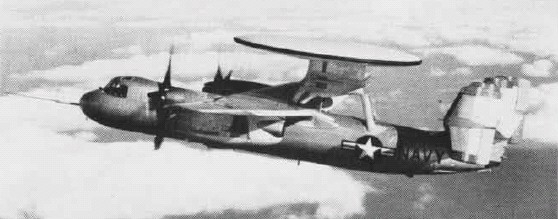Sea-Based BMD — Another Successful Test

Â
Another test of the SM-3 Blk 1A was successfully completed last night with the intercept of an IRBM-class target:
The Missile Defense Agency (MDA), U.S. Navy sailors aboard the Aegis destroyer USS O’KANE (DDG 77), and Soldiers from the 94th Army Air and Missile Defense Command operating from the 613th Air and Space Operations Center at Hickam Air Force Base, Hawaii, successfully conducted a flight test of the Aegis Ballistic Missile Defense (BMD) element of the nation’s Ballistic Missile Defense System, resulting in the intercept of a separating ballistic missile target over the Pacific Ocean. This successful test demonstrated the capability of the first phase of the European Phased Adaptive Approach (EPAA) announced by the President in September, 2009.
At 2:52 a.m. EDT (6:52 p.m. April 15 Marshall Island Time), an intermediate-range ballistic missile target was launched from the Reagan Test Site, located on Kwajalein Atoll in the Republic of the Marshall Islands, approximately 2,300 miles southwest of Hawaii. The target flew in a northeasterly direction towards a broad ocean area in the Pacific Ocean. Following target launch, a forward-based AN/TPY-2 X-band transportable radar, located on Wake Island, detected and tracked the threat missile. The radar sent trajectory information to the Command, Control, Battle Management, and Communications (C2BMC) system, which processed and transmitted remote target data to the USS O’KANE. The destroyer, located to the west of Hawaii, used the data to develop a fire control solution and launch the SM-3 Block IA missile approximately 11 minutes after the target was launched.
As the IRBM target continued along its trajectory, the firing ship’s AN/SPY-1 radar detected and acquired the ballistic missile target. The firing ship’s Aegis BMD weapon system uplinked target track information to the SM-3 Block IA missile. The SM-3 maneuvered to a point in space as designated by the fire control solution and released its kinetic warhead. The kinetic warhead acquired the target, diverted into its path, and, using only force of a direct impact, destroyed the threat in a “hit-to-kill†intercept.
During the test the C2BMC system, operated by Soldiers from the 94th Army Air and Missile Defense Command, received data from all assets and provided situational awareness of the engagement to U.S. Pacific Command, U.S. Northern Command and U.S. Strategic Command.
The two demonstration Space Tracking and Surveillance Satellites (STSS), launched by MDA in 2009, successfully acquired the target missile, providing stereo “birth to death†tracking of the target.
Today’s event, designated Flight Test Standard Missile-15 (FTM-15), was the most challenging test to date, as it was the first Aegis BMD version 3.6.1 intercept against an intermediate-range target (range 1,864 to 3,418 miles) and the first Aegis BMD 3.6.1 engagement relying on remote tracking data. The ability to use remote radar data to engage a threat ballistic missile greatly increases the battle space and defended area of the SM-3 missile.
Initial indications are that all components performed as designed. Program officials will spend the next several months conducting an extensive assessment and evaluation of system performance based upon telemetry and other data obtained during the test.
FTM-15 is the 21st successful intercept, in 25 attempts, for the Aegis BMD program since flight testing began in 2002. Across all BMDS elements, this is the 45th successful hit-to-kill intercept in 58 flight tests since 2001.
Aegis BMD is the sea-based midcourse component of the MDA’s Ballistic Missile Defense System and is designed to intercept and destroy short to intermediate-range ballistic missile threats. MDA and the U.S. Navy cooperatively manage the Aegis BMD Program.
This test in essence replicates what Phase I of the European Phased Adaptive Approach will be capable of in final form — a sea-based SM-3 Blk 1A intercept of MRBM/IRBM class missiles with cueing from a forward-based sensor (here the TPY-2). The lead element of Phase I, the sea-based element, is already deployed with the scheduled deployment of the USS Monterey (CG 61) earlier this year on BMD patrol. Worth emphasizing is that while deployed on BMD patrol, Monterey is nonetheless still capable of multiple missions, of which BMD is one, demonstrating the flexibility of these mobile, sea-based units.




A special irony is that after all the efforts to keep Aegis from being the first weapon system to shoot this target-they did anyway.
Plus-it keeps TC, BC, AB and the others from getting beaten for a while.
“Plus-it keeps TC, BC, AB and the others from getting beaten for a while.”
…and here I thought that was all part of the in-house morale-building program… 🙂
w/r, SJS
Ummmm, the score is 22/25. But who’s counting? SRBM – check, MRBM like – check, IRBM – check, Satellite – check, multiple targets at once – check, combined simultaneous strike, AAW and BMD – check, ascent phase – check, Launch on remote – check…. Any questions?
So, how did 21/25 show up in the presrel? I know that’s not what you submitted — since you ARE counting.
Looking forward to the big SM-3 Blk IB test coming up later this year. Can’t wait to see how the (internal) naysayers spin a successful test as a reason to deemphasize Aegis BMD.
Ref the 21/25 vs 22/25 disparity — MDA does not include the BURNT FROST intercept as part of the test history as it was an operational shot. So while, yes, there have been a total of 22/25 successful intercepts, MDA would say that as a testing and development agency (and “not a Combat Support Agency” – to quote the current Director), they only track the tests, conveniently setting aside the role they played in BURNT FROST that merited a JMUC for the Agency as a whole.
That said, even 21/25 is nothing to sneeze at when considering the record of the GBI program and putting it all in context of which system is most likely to see operational employment in real world conditions given the current and emerging threat sets out there…
w/r, SJS
P.S. Video here: FTM-15 video (short version)
and here:
FTM-15 Video
well, even IF one doesnt count BURNT FROST, the score would go from 22/25 to 21/24 right? Or did Sister mary teresa rosina fail me in math class? Nonetheless, that thing was jacked up.